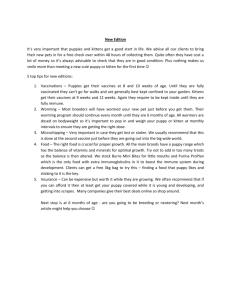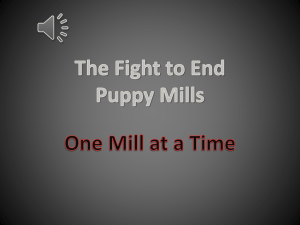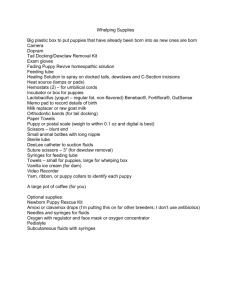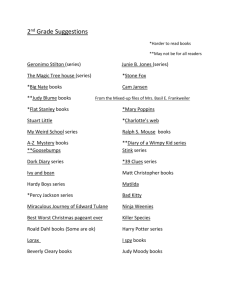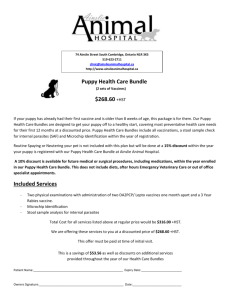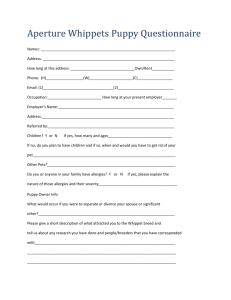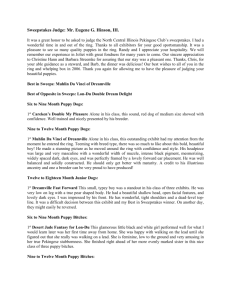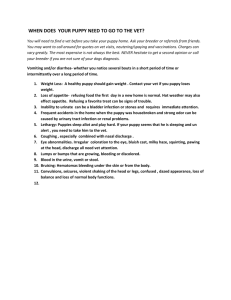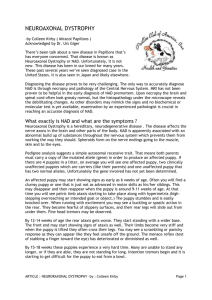Resuscitating the Newborn Puppy
advertisement
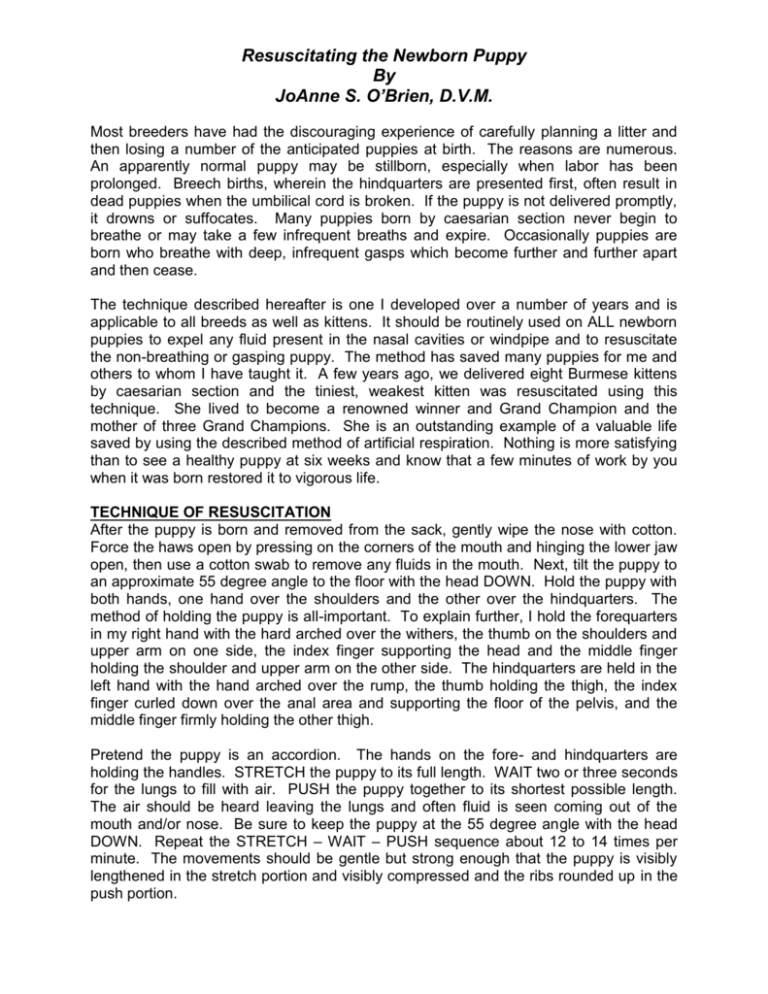
Resuscitating the Newborn Puppy By JoAnne S. O’Brien, D.V.M. Most breeders have had the discouraging experience of carefully planning a litter and then losing a number of the anticipated puppies at birth. The reasons are numerous. An apparently normal puppy may be stillborn, especially when labor has been prolonged. Breech births, wherein the hindquarters are presented first, often result in dead puppies when the umbilical cord is broken. If the puppy is not delivered promptly, it drowns or suffocates. Many puppies born by caesarian section never begin to breathe or may take a few infrequent breaths and expire. Occasionally puppies are born who breathe with deep, infrequent gasps which become further and further apart and then cease. The technique described hereafter is one I developed over a number of years and is applicable to all breeds as well as kittens. It should be routinely used on ALL newborn puppies to expel any fluid present in the nasal cavities or windpipe and to resuscitate the non-breathing or gasping puppy. The method has saved many puppies for me and others to whom I have taught it. A few years ago, we delivered eight Burmese kittens by caesarian section and the tiniest, weakest kitten was resuscitated using this technique. She lived to become a renowned winner and Grand Champion and the mother of three Grand Champions. She is an outstanding example of a valuable life saved by using the described method of artificial respiration. Nothing is more satisfying than to see a healthy puppy at six weeks and know that a few minutes of work by you when it was born restored it to vigorous life. TECHNIQUE OF RESUSCITATION After the puppy is born and removed from the sack, gently wipe the nose with cotton. Force the haws open by pressing on the corners of the mouth and hinging the lower jaw open, then use a cotton swab to remove any fluids in the mouth. Next, tilt the puppy to an approximate 55 degree angle to the floor with the head DOWN. Hold the puppy with both hands, one hand over the shoulders and the other over the hindquarters. The method of holding the puppy is all-important. To explain further, I hold the forequarters in my right hand with the hard arched over the withers, the thumb on the shoulders and upper arm on one side, the index finger supporting the head and the middle finger holding the shoulder and upper arm on the other side. The hindquarters are held in the left hand with the hand arched over the rump, the thumb holding the thigh, the index finger curled down over the anal area and supporting the floor of the pelvis, and the middle finger firmly holding the other thigh. Pretend the puppy is an accordion. The hands on the fore- and hindquarters are holding the handles. STRETCH the puppy to its full length. WAIT two or three seconds for the lungs to fill with air. PUSH the puppy together to its shortest possible length. The air should be heard leaving the lungs and often fluid is seen coming out of the mouth and/or nose. Be sure to keep the puppy at the 55 degree angle with the head DOWN. Repeat the STRETCH – WAIT – PUSH sequence about 12 to 14 times per minute. The movements should be gentle but strong enough that the puppy is visibly lengthened in the stretch portion and visibly compressed and the ribs rounded up in the push portion. ADVANTAGES OF THE TECHNIQUE I prefer the above method of mouth-to-mouth resuscitation because it forces the fluid out of the airways and this is necessary for the puppy to survive. I prefer it to the direct compression-of-the-ribs method of artificial respiration because there is danger of injury to the delicate rib cage. Also, it is of some direct benefit to the circulatory system and reinforces the heartbeat. I suggest you practice this technique on your next litter and perfect it for the occasion when you need it to save a life. Try it; believe me, it works! Copied with permission of the author, JoAnne O’Brien, D.V.M., from Bagpiper Chatter, December 1983.
